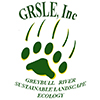
Since 2006, when fire burned through the heart of the GRSLE project area and exposed previously unimagined diversity and density of archaeological remains, glass beads have become a much more common component of Absaroka Mountain archaeology.

A total of 16 locations, many of them in remote areas of the Washakie Wilderness have been recorded by GRSLE (with Shoshone National Forest ARPA permit) with assemblages ranging from a single bead, to multi-feature sites with over 500 provenienced beads. Several of these locations also have associated metal objects, that also provide rare glimpses into Contact Period people’s lives. Four other key locations recorded after a 2003 fire with beads and metal items (3 of which reported by Eakin (2005)) are now part of the University of Wyoming Archaeological Repository (UWAR) collections are also included here to expand the regional sample.
Examples
Here a very few examples of glass beads recorded by the GRSLE project. Images of individual beads from sites (and for several sites by individual features) are available under the Bead Images heading on this page.
Documentation
The emphasis of documentation is systematic individual bead documentation of attributes shown here. Basic descriptive framework from Kidd and Kidd (1970; available on-line 2012) as expanded by Karklins (2012). Each bead is examined using a DinoLite digital microscope (model AM73915MZT) DinoCapture 2.0 software (Version 1.5.39.B). Multiple magnified photos of each bead are saved and DinoCapture measurements of bead dimensions are recorded in Excel file[1].
The bead photos are assembled into an image catalog and image metadata additions made in Adobe Bridge to include a site reference and general descriptive categories such as bead type, color, fragmentation, etc. are included as image metadata keywords – artifact catalog number is incorporated in image file name.
[1] A randomly selected sample of five beads was selected and each was measured a total of ten times over a period 4/19/2021-5/6/2019 with both the DinoLite and digital calipers to have a record of individual and instrument recording variations.
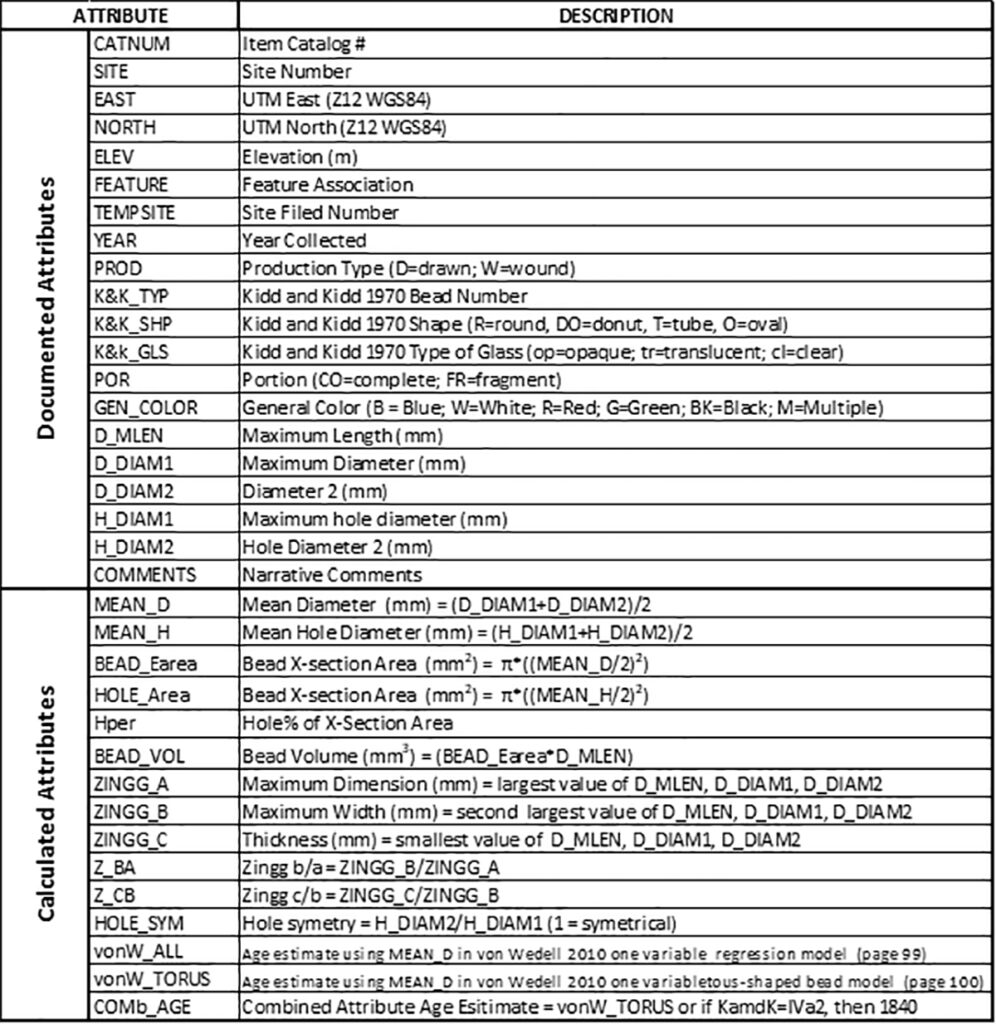
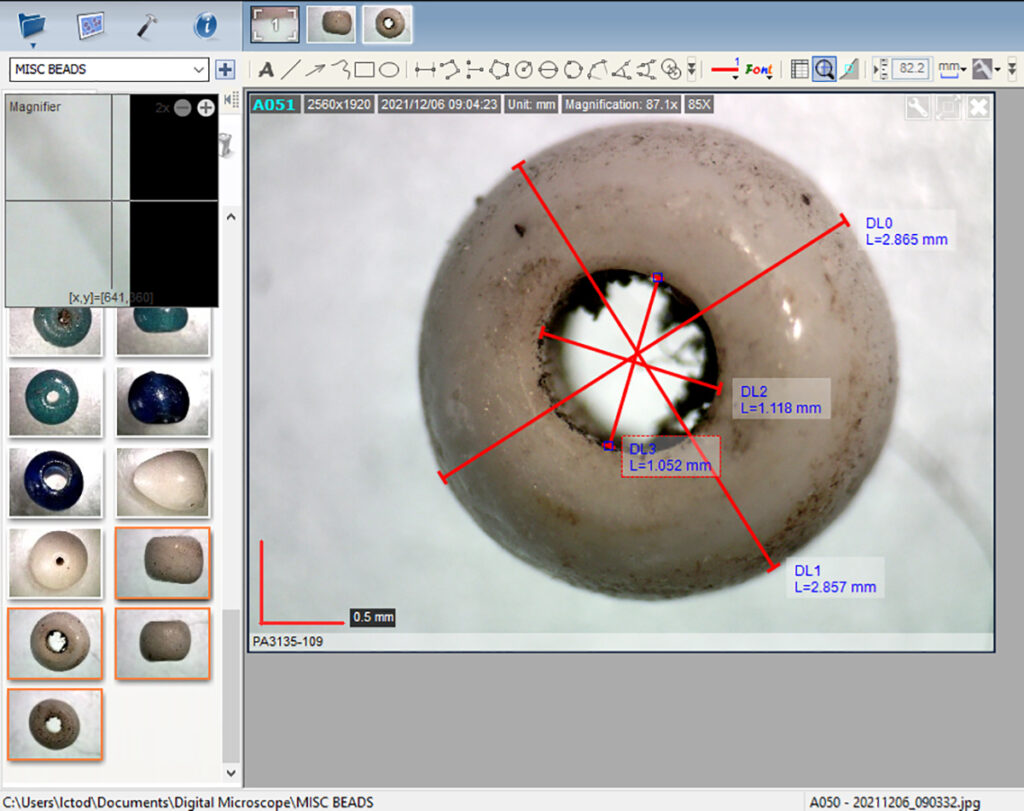
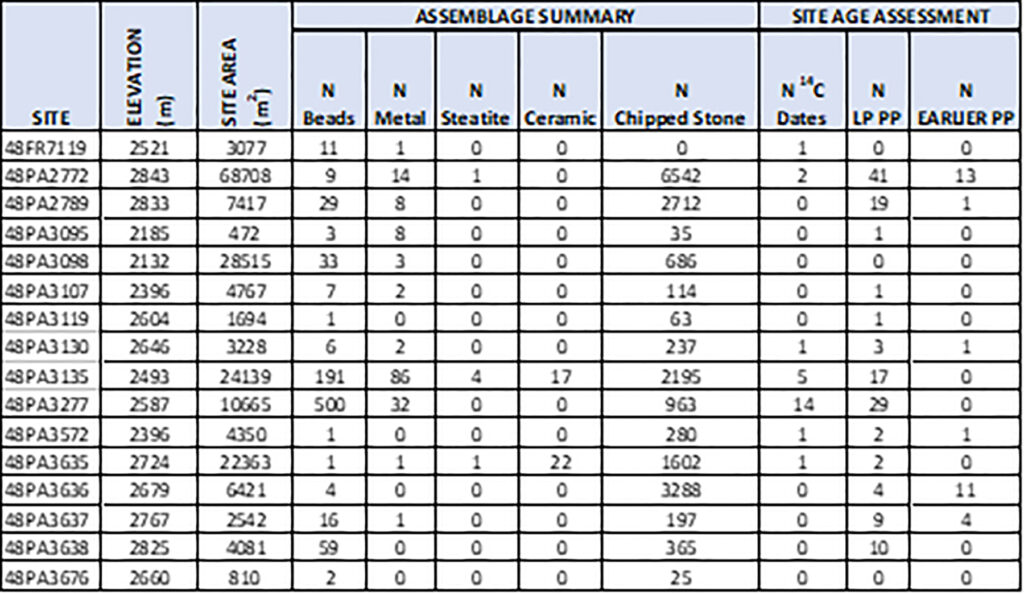
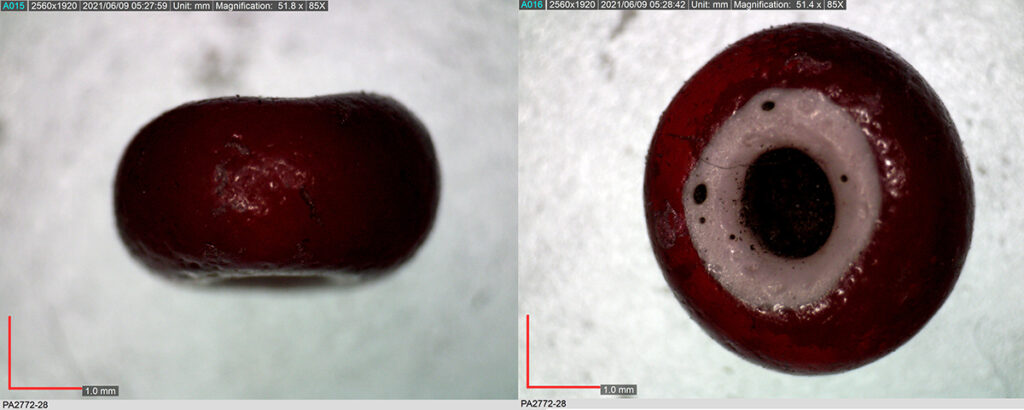
Bead Images
- 48PA2664 bead photos (UWAR collections)
- 48PA2666 bead photos (UWAR collections)
- 48PA2667 bead photos (UWAR collections)
- 48PA2706 bead photos (UWAR collections)
- 48PA2772 bead photos
- 48PA2789 bead photos
- 48PA3095 bead photos
- 48PA3098 bead photos
- 48PA3107 bead photos
- 48PA3130 bead photos
- 48PA3135 bead photos grouped by feature
- 48PA3277 bead photos grouped by feature
- 48PA3635 bead photo
- 48PA3636 bead photos
- 48PA3637 bead photos
- 48PA3638 bead photos
- 48PA3676 bead photos
- 48FR7119 bead photos
References Cited
Billeck, W.T. (2008). Red-on-White drawn or Cornelian Beads: A 19th-Century Temporal Marker for the Plains. Beads: Journal of the Society of Bead Researchers 20:49-61.
Eakin, D.N. (2005). Evidence for Shoshonean Bighorn Sheep Trapping and Early Historic Occupation in The Absaroka Mountains of Northwest Wyoming. In University of Wyoming/National Park Service Research Center 29th Annual Report, edited by H.J. Harlow, and M. Harlow, pp. 74-86. University of Wyoming Graphic Arts and Publications, Laramie
Karklins, Karlis (2012). Guide to Description and Classification of Glass Beads Found in the Americas. Beads: Journal of the Society of Bead Researchers. 24:62-90.
Kidd, K.E. , and M.A. Kidd ( 1970). A classification system for glass beads in the use of field archaeologists. In Canadian History Series: Occasional Papers in Archaeology and History, No. 1, Ottawa.
Kidd, K.E. , and M.A. Kidd ( 2012). A classification system for glass beads in the use of field archaeologists. Beads: Journal of the Society of Bead Researchers 24:39-61.
